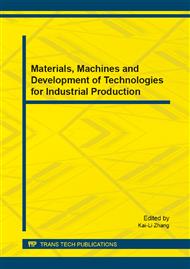p.380
p.388
p.392
p.397
p.401
p.405
p.410
p.415
p.421
RETRACTED: Reduced Postoperative Pain after Inguinal Hernia Repair with Absorbable String in Children
Retracted:
The paper was retracted by publisher due to authorship misconduct, ethical issue and potential data fabrication, based on the invormation provided by authors.
Abstract:
Retracted paper: Object: To investigate effects of the high ligation of hernia sac with absorbable string for children with indirect inguinal hernia. Method: A retrospective analysis of 92 patients with inguinal hernia who underwent the high ligation of hernia sac was conducted in the present study, in which 20 cases underwent the high ligation of hernia sac with absorbable string while 72 cases treated with the high ligation of hernia sac with non-absorbable suture. The mean operation time, mean intraoperative blood loss and average postoperative hospital stay and postoperative pain rating were analyzed. Results: Though no statistical difference existed in the mean operation time, mean intraoperative blood loss, average postoperative hospital stay between the two groups (P>0.05). However, the postoperative pain in the high ligation of hernia sac with absorbable string group was significantly lower than that of the non-absorbable group. Conclusion: Compared with that of the high ligation of hernia sac with non-absorbable string, there is lower grade postoperative pain in the high ligation with absorbable suture.
Info:
Periodical:
Pages:
401-404
Online since:
August 2014
Authors:
Permissions:
Share:
Citation:


